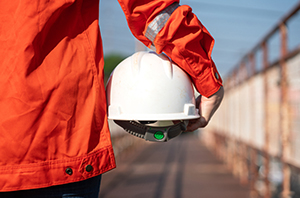
13 November 2024 | RRC International
Health and Safety: Looking to the Future
Can you believe that the Health and Safety Act has only been around for 50 years? To many of us, health and safety operations are instilled in our minds, and we can’t imagine what time was like before them.
What is the Health and Safety Act 1974?The Health and Safety at Work Act 1974 was a landmark piece of legislation that changed how workplace safety was handled in the UK.
Before this law, there were only a few rules and regulations covering parts of workplace safety and welfare. As the Act was introduced, it made it abundantly clear that employers had to take responsibility for protecting the health, safety, and welfare of their workers.
The Act introduced several key provisions that have since become the cornerstones of health and safety management, including the establishment of the Health and Safety Executive (HSE) to oversee and enforce compliance with health and safety regulations. The Act also required employers to conduct risk assessments, introduce safety training, and implement measures to reduce workplace risks.
While we’ve touched on the significant changes the Health and Safety Act has undergone these past 50 years, it’s time to turn our attention to the future.
What do health and safety practitioners and workplaces need to consider in the future?
A greater emphasis on wellbeing and work-balance
Health and safety has become a lot more holistic since 1974. There is a growing expectation from younger generations that a workplace should be as equally invested in mental health and wellbeing, as they are in physical health and safety.
In the future, we expect that work-life balance and psychological wellbeing will become standard areas of consideration in all sectors. Especially considering how stress is on the rise, with the most common cause of stress being work-related (Statistica).
We’re starting to see recognition of the psychosocial factors affecting mental health at work, but we may soon see comprehensive well-being programmes addressing stress, burnout, and other mental health issues that will support both employees and employers.
Considerations for remote working
Many companies that had no plans to allow remote working were forced to adapt during the pandemic, and many are not looking to ditch it now that the worst of Covid-19 has passed.
Employers and workplaces have the same health and safety responsibilities for employees whether they are working at home or in a workplace, and this includes risk assessments. The HSE recommends that all employers should consider the below as part of the risk assessment for home workers:
Stress and poor mental health
Using equipment like computers and laptops safely
Their working environment
Addressing climate anxiety
As sustainability becomes more important and climate anxiety rises, workplaces will need to consider the environmental impact of their operations. H&S professionals will need to ensure that health and safety practices align with sustainable goals, including managing risks related to climate change, pollution, and waste.
Keeping up with the tech
Technology is always progressing. We have seen recently just how quickly tech such as AI can evolve and disrupt the industry. Technological advancement will change the face of work, and best practices and regulations will need to change alongside this.
Final Thoughts
The Health and Safety at Work etc Act 1974 has been an invaluable piece of legislation for the Health and Safety industry. Whilst the content of the Act will not change, looking to the future, evolving, and improving the way we work safely can only be a good thing. We have come a long way in the last 50 years and should be proud of the achievements we have collectively made during this time.